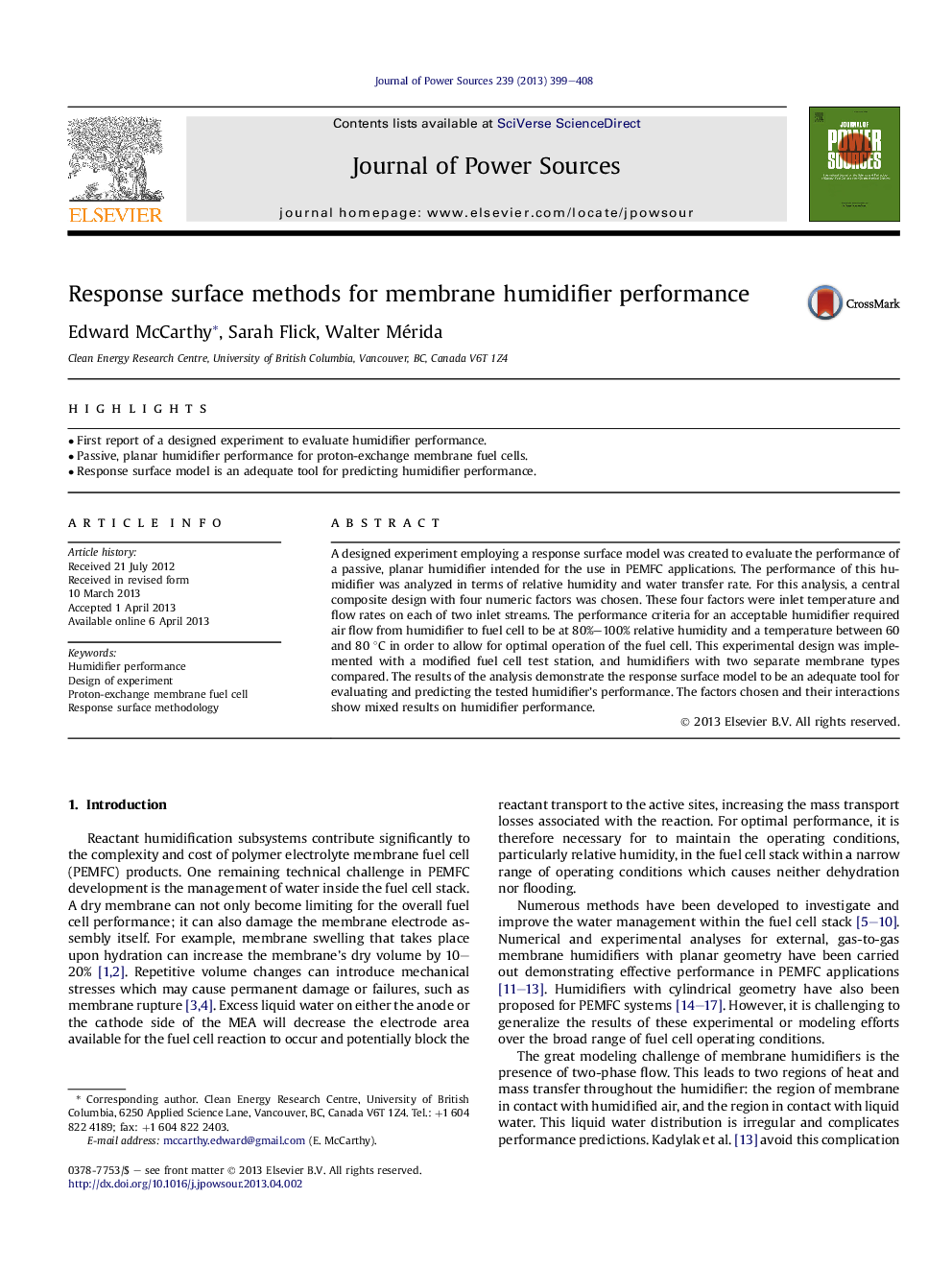| Article ID | Journal | Published Year | Pages | File Type |
|---|---|---|---|---|
| 7740146 | Journal of Power Sources | 2013 | 10 Pages |
Abstract
A designed experiment employing a response surface model was created to evaluate the performance of a passive, planar humidifier intended for the use in PEMFC applications. The performance of this humidifier was analyzed in terms of relative humidity and water transfer rate. For this analysis, a central composite design with four numeric factors was chosen. These four factors were inlet temperature and flow rates on each of two inlet streams. The performance criteria for an acceptable humidifier required air flow from humidifier to fuel cell to be at 80%-100% relative humidity and a temperature between 60 and 80 °C in order to allow for optimal operation of the fuel cell. This experimental design was implemented with a modified fuel cell test station, and humidifiers with two separate membrane types compared. The results of the analysis demonstrate the response surface model to be an adequate tool for evaluating and predicting the tested humidifier's performance. The factors chosen and their interactions show mixed results on humidifier performance.
Related Topics
Physical Sciences and Engineering
Chemistry
Electrochemistry
Authors
Edward McCarthy, Sarah Flick, Walter Mérida,
